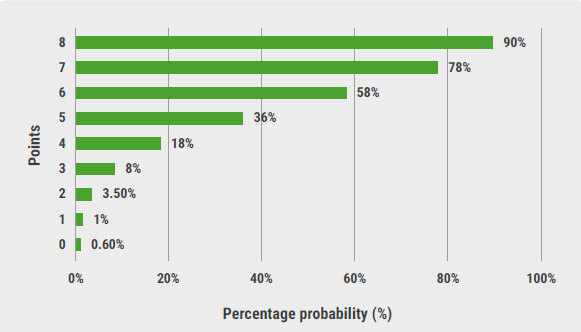Researchers examined public health administrative claims data collected in Quebec on 22,033 men who initiated ADT from 2000 to 2015. Overall, 3,910 men (17.8%) had bone mineral density testing before they started cancer treatment.
The proportion of men undergoing bone mineral density testing before treatment increased from 4.1% in 2000 to 23.4% in 2015, researchers report in the Journal of the National Comprehensive Cancer Network.
"Androgen deprivation therapy is associated with loss of bone density which could lead to fractures, and bone density testing can help clinicians assess a patient's risk of fracture and identify patients who would benefit from additional monitoring or interventions to prevent fractures," said senior study author Dr. Alice Dragomir, an associate professor in the department of surgery, division of urology, at McGill University in Montreal.
"Perhaps bone density testing rates may increase in the coming years given the renewed attention to bone health issues in the prostate cancer clinical community as evidenced by many recent publications focusing on bone health clinical guidelines," Dr. Dragomir said by email.
Several organizations, including the American Society of Clinical Oncology and Cancer Care Ontario have guidelines to promote optimal bone health management in prostate cancer patients, and this should over time lead more men to get BMD assessments, Dr. Dragomir said.
Some men had a greater likelihood of getting bone mineral density screening than others, the analysis found.
For example, men with a prior history of osteoporosis were more likely to get screened (odds ratio 1.84) than men without this history. Men were also more likely to get screened when they had a history of bisphosphonate use (OR 1.47) or long-term corticosteroid use (OR 1.63).
Men were less likely to get BMD testing prior to initiating ADT when they had a higher Charleston comorbidity score (OR 0.65) or lived in rural communities (OR 0.77).
One limitation of the study is that administrative claims data make it impossible to determine whether BMD testing did not occur because of patient refusal to follow physician recommendations or a lack of physician recommendation, the study team notes. It's also possible that some patients might have received testing in private healthcare settings, and that this wasn't reflected in the data used for this analysis.
The rates of bone density testing are also low because of unclear directives from guidelines, as alluded to by the authors, said Dr. Quoc-Dien Trinh, co-director of the Dana-Farber/Brigham and Women's Prostate Cancer Program and an associate professor of surgery at Harvard Medical School in Boston.
"Also, the management of advanced prostate cancer is multidisciplinary, with different providers being responsible for ADT administration depending on where you receive care," Dr. Trinh, who wasn't involved in the study, said by email. "Between the unclear guidelines and the complex coordination of care, it is not surprising that bone density testing rates are sub-optimal."
By Lisa Rapaport
SOURCE: https://bit.ly/3m0JKNI Journal of the National Comprehensive Cancer Network, online October 1, 2020.
Posted on
Previous Article
« Novartis to pursue SMA drug branaplam in Huntington’s disease Next Article
Intravascular lithotripsy safely treats severely calcified coronary-artery disease »
« Novartis to pursue SMA drug branaplam in Huntington’s disease Next Article
Intravascular lithotripsy safely treats severely calcified coronary-artery disease »
© 2024 Medicom Medical Publishers. All rights reserved. Terms and Conditions | Privacy Policy
HEAD OFFICE
Laarderhoogtweg 25
1101 EB Amsterdam
The Netherlands
T: +31 85 4012 560
E: publishers@medicom-publishers.com


